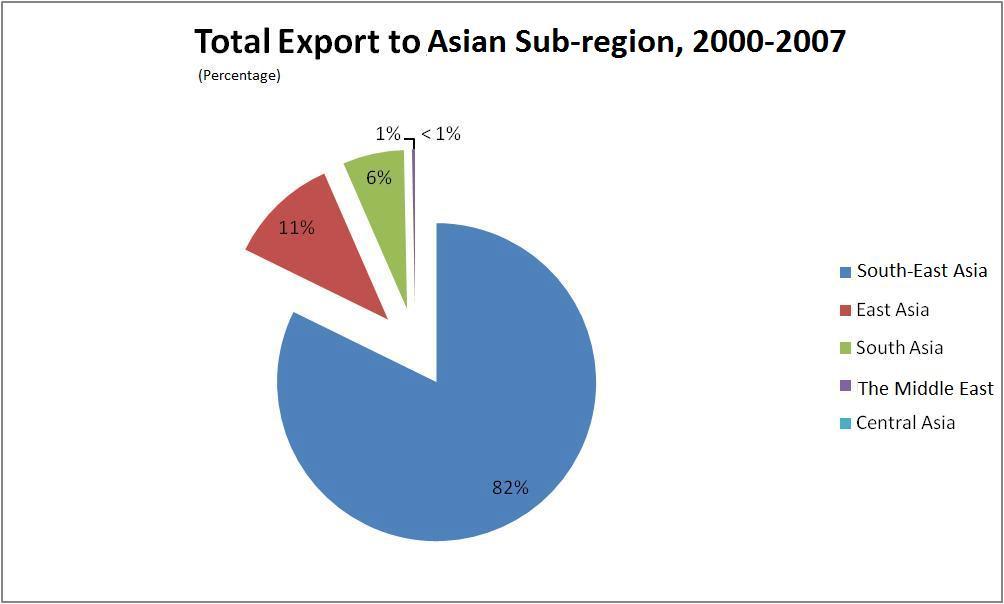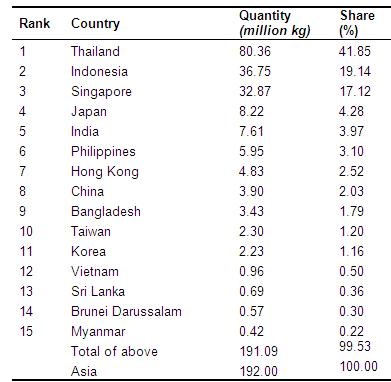6.1.1 Asian Region
Asia is the world’s largest and most populous continent. Needless to say that consumption and supply of herbal products and health supplements are tremendous. Malaysia, being a small country, produced relatively limited quantity of herbal raw materials for local consumption as well as for export. In fact, it’s import quantity of the herbal raw materials is far larger than produced locally Malaysia has been known for a long time as a trading house of herbal raw materials, such as spices, either produced locally or from other countries.
Malaysia’s total exports of the products to other countries were fluctuating for the period between years 2000 to 2007. The volume of trade had been increasing during the initial years until year 2003 after which it dropped abruptly to about 0.5 million kg in year 2004, from an amount of about 40 million kg. It remained at that level until year 2006. After which the total amount increased very significantly until year 2007. As indicated earlier the low level of export during year 2004 to 2006 could be attributed to the changes in consumers’ demand for processed raw materials.

Export Trend
Malaysia exported considerable amounts of raw materials to many countries of the Asian region such as Thailand, Indonesia, Republic of Singapore, Japan, India, Philippine, Hong Kong, China, Bangladesh, Taiwan, Republic of Korea, Vietnam, Sri Lanka, Brunei Darussalam, Myanmar, Pakistan, Maldives, Cambodia, Nepal, Kazakhstan, Kyrgyzstan and Macau. The main products exported by Malaysia to these countries were garlic, other vegetable products not elsewhere specified, other mixtures of odoriferous substances of a kind used as raw materials in industry, ginger, other spices, seeds of cumin, seeds of coriander, other mixtures of odoriferous substances used in the food and drink industry, gaharu wood chips, seaweeds and other algae, other plants and parts of plants used in perfumery and, pharmaceutical industries, other alkaloids of cinchona and their derivatives, salts and other essential oils other than those of citrus fruits in that order. Besides these products, Malaysia also exported other raw products but in relatively small quantities. Refer to Appendix 5 (Asia: Export of herbal raw material and aromatic plants 2000-2007 by country)
Share of Quantity of Raw Materials Exported to Asian Sub Regions

About 82% of the exports of the raw materials fom Malaysia were exported to countries in the South-East sub-region, 11% to East Asia, 6% to South Asia,. 1% to the Middle East, and less than 1% to Central Asia.
Major Export Destinations of Raw Materials from Malaysia
The countries as shown in the table below represented major export destinations for raw materials from Malaysia. Thailand had the major share of Malaysia’s export at 42% followed by Indonesia and Singapore at about 19% and 17% respectively. Export shares to other countries were less than 5% each.

Table 168: Major export destination from Malaysia


